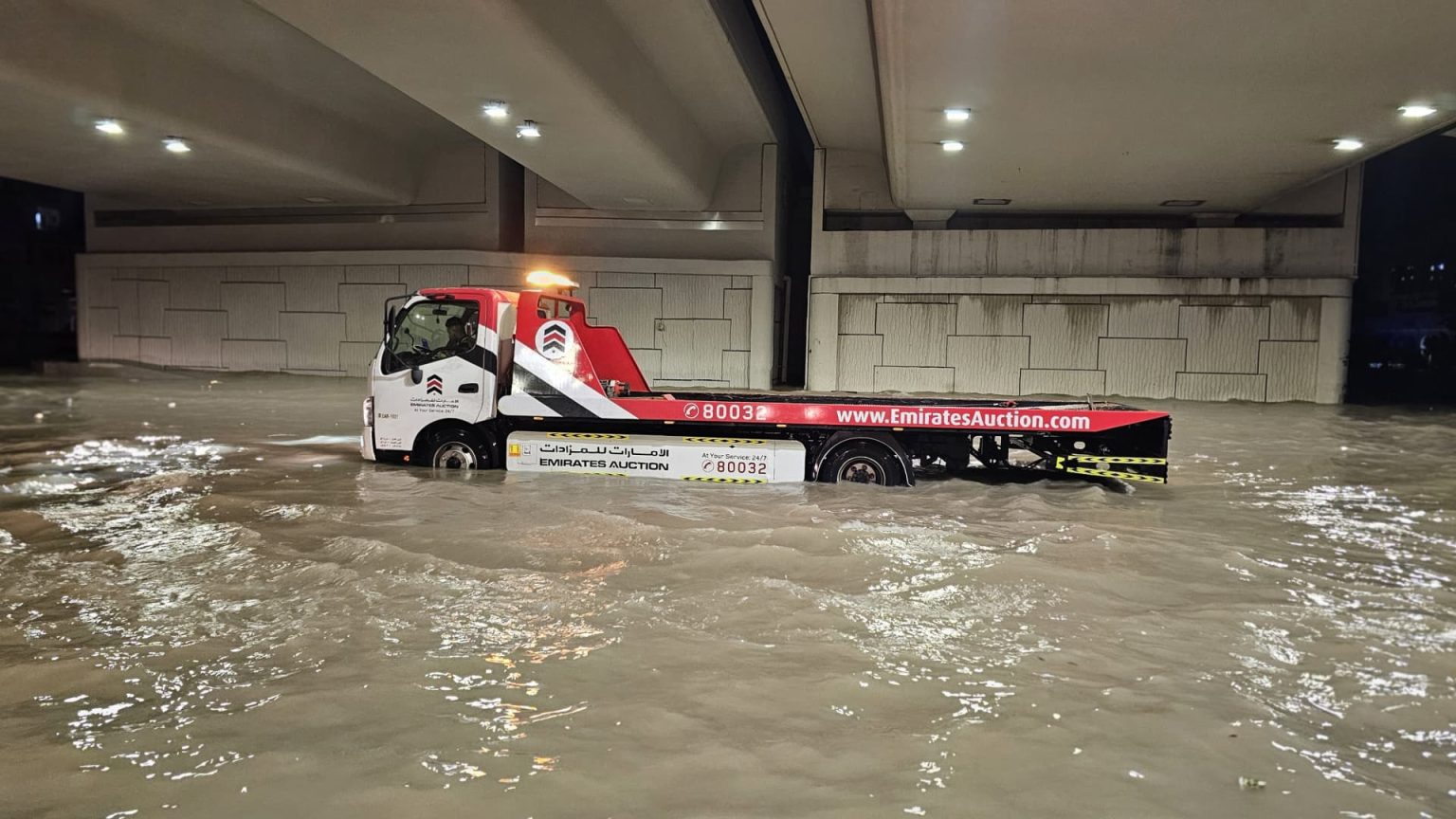Recent storms and heavy rain in some Gulf states, including the United Arab Emirates, have caused significant flooding and led to the closure of Dubai’s airport on Tuesday. This closure is particularly notable as Dubai’s airport is one of the busiest in the world. The UAE, which is typically known for its hot and sunny weather, experienced over 100 mm of rain in a 24-hour period in some areas, marking a 75-year record for the country. The local government issued a red warning and closed offices, schools, and banks in response to the severe weather conditions. The storms also impacted other parts of the Middle East, with at least 19 deaths reported in Oman due to flooding.
Images and reports from the affected areas show the extent of the flooding and the impact on local residents. Vehicles are seen struggling to move on flooded streets, and pedestrians are forced to wade through submerged areas. The adverse weather conditions have disrupted daily life in Dubai, with non-essential travel being discouraged due to the hazardous conditions caused by the heavy rain. People are seen navigating their way through flooded streets and attempting to manage the aftermath of the storm, which has left many areas underwater.
The closure of Dubai’s airport, in addition to the red warning issued by the local government and the shutdown of various institutions, highlights the severity of the situation caused by the storms and heavy rain. The country’s infrastructure and emergency response systems have been put to the test as they work to address the flooding and provide support to affected residents. Reports indicate that the rainfall experienced in the UAE and other Gulf states has broken records and caused significant damage, leading to loss of life and property in some areas.
Videos and photographs capturing the aftermath of the storms, including submerged vehicles and streets, give a glimpse into the challenging conditions faced by residents in the affected regions. The scenes of flooding and destruction serve as a stark reminder of nature’s power and the importance of preparedness and response strategies in the face of extreme weather events. The impacts of the storms are likely to be felt long after the rain has stopped, as communities work to recover and rebuild in the wake of the disaster.
As the cleanup and recovery efforts get underway in the flood-affected areas, the focus shifts to providing assistance and support to those in need. Emergency services, government agencies, and volunteers are working together to assess the damage, provide aid to affected populations, and restore essential services. The resilience of the communities affected by the storms is evident as they come together to overcome the challenges posed by the flooding and work towards rebuilding their lives and livelihoods in the aftermath of the disaster.
The storms and heavy rain experienced in the Gulf states, particularly in the UAE and Oman, serve as a reminder of the unpredictable and destructive nature of extreme weather events. The need for robust infrastructure, emergency preparedness, and community resilience is underscored by the impacts of the flooding on local populations and economies. Moving forward, efforts to mitigate the risks associated with severe weather events and enhance response and recovery capabilities will be crucial in ensuring the safety and well-being of communities in the face of future disasters.


